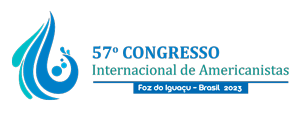| Dados do autor | |
|---|---|
| Sua instituição | Instituto de Investigaciones Históricas - Universidad Nacional Autónoma de México IIH UNAM |
| País de origem do autor | México |
| Dados co-autor(es) [Máximo de 2 co-autores] | |
| Sua titulação | Post-Doctor |
| Proposta de Paper | |
| Área Temática | 01. Antropologia |
| Grupo Temático | Beyond writing and iconography: coding |
| Título | The relationship between logosyllabic glyphs and pictography in the Florentine Codex: A reassessment |
| Resumo | Recently, different voices have urged us to move away from the phonocentric definition of writing in regards to Middle American graphic communication systems (Offner and Mikulska 2019), while epigraphists have called us to consider a more flexible approach in regards to the transcription and analysis of the logosyllabic glyphs present in systems like Nahua writing (Whittaker 2020). In this paper, I will present a re-assessment of the relationship between logosyllabic signs and pictography in the Florentine Codex, the XVIth century cultural encyclopaedia of the Nahua world. While defenders of a clear-cut separation between logosyllabic writing and “iconography” in regards to Aztec codices insist that we should treat glottographic glyphs as a wholly independent system, in this paper I will analyse examples of hitherto misunderstood glyphs which will show that, in practice, it is impossible to decipher isolated glyphs without paying close attention to their pictographic context and to the alphabetic Nahuatl text that they accompany. Thus, in the Florentine Codex, the more well-known functions of Nahuatl writing such as the labelling of characters and the register of dates co-exists with complex attempts to convey instructions (as in the glyphs pertaining to amantecayotl or feather works), narrate actions, and even transcribe the conjugations of verbs! Rather than considering a hard division between the elements of the Nahua graphic communication system, I will show that there is a complex interplay between the elements that are traditionally considered as merely iconographic, and elements that are interpreted as logosyllabic. Finally, I will show that we should not only conceive the pictographies of the Florentine Codex as mere iconographic illustrations, nor only as a third text of a visual character as it has been already suggested (Terraciano 2010), but as the actual vehicle of the spoken word in the sense of indigenous pictographic accounts. |
| Palavras-chave | |
| Palavras-chave |
|
